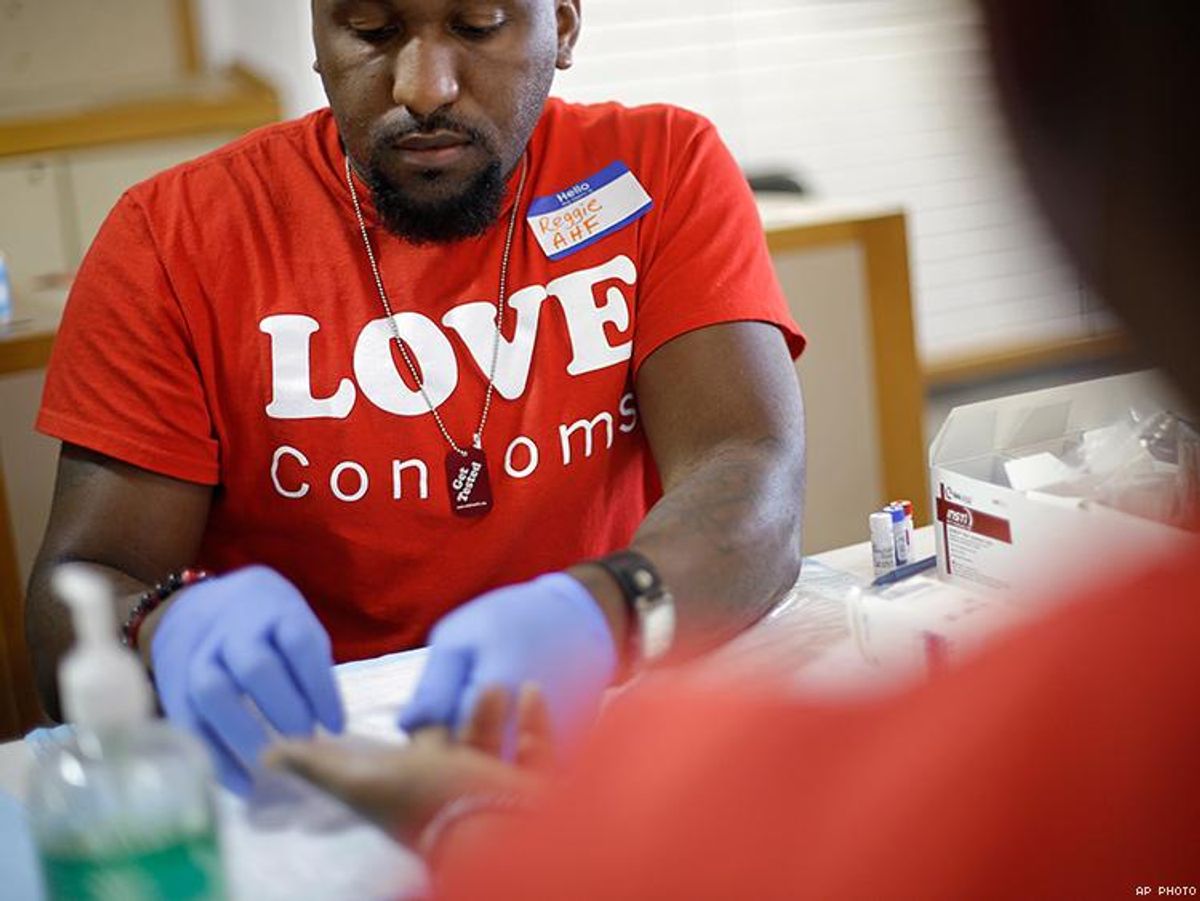Buried in some upbeat reporting about the latest U.S. statistics on HIV from the Centers for Disease Control and Prevention are some very disturbing findings about an increase in infection among gay men of color.
At a conference in Atlanta Sunday, the CDC reported steep declines in diagnoses among heterosexuals — 35 percent —and people who inject drugs — 63 percent — from 2005 to 2014. HIV diagnoses among white gay and bisexual men have dropped about 18 percent over the same period. Among women, diagnoses declined by 40 percent. Black women, especially, have seen the sharpest decline in new infections, which have been cut nearly in half.
But mainstream reporting paid little attention to the CDC's finding that last year, African-Americans accounted for almost half — 44 percent — of all new HIV diagnoses. As The Advocate reported in our series #6in10Men, gay men make up only 1.4 percent of the total black population in the U.S., yet they account for an astounding percentage of new HIV infections among blacks.
The headline, according to the Associated Press, was that new HIV infections in gay black men may finally be leveling off, with the number of newly diagnosed cases of HIV in gay and bisexual black men changing less than 1 percent since 2010. Gay and bi black men account for about 10,000 of the 40,000 new HIV cases diagnosed last year.
While the CDC called that a cause for hope, another HIV expert told the AP the news is still grim for a large segment of Americans.
"Stabilizing at 10,000 is not a reason to celebrate," said Dr. Carlos del Rio of Emory University, who heads a group for physicians who treat HIV.
Over the past decade, the trend among gay and bi men of color was not as encouraging as it was in just the past few years. HIV diagnoses among African-American men who have sex with men has increased about 22 percent, and the rate among gay and bisexual Latinos has also increased, by about 24 percent.
What’s even more disturbing are the numbers among those black and Latino gay and bi men between the ages of 13 and 24: researchers found an 87 percent rise in new HIV diagnoses since 2005. Diagnoses among their white counterparts also increased, by 56 percent, according to the CDC.
This widening racial gap is “a deeply disturbing finding,” Jonathan Mermin, director of the National Center for HIV/AIDS, Viral Hepatitis, STD, and TB Prevention, told BuzzFeed.
Mermin said an increase in HIV prevention efforts targeting communities of color contributed to the leveling-off since 2010. But the racial gap is still growing, he said. “Health disparities have turned HIV from an infection into an injustice,” Mermin told BuzzFeed.
The CDC found Latinos accounted for nearly a quarter, or 23 percent, of new HIV infections last year. Because HIV testing rates have been stable for gay Latino men since at least 2005, The Verge reports the CDC is baffled by the increase in diagnoses in that group. "Is it because the prevention interventions are just not getting to that group in a way that's effective?" said Eugene McCray, director of the CDC's Division of HIV/AIDS Prevention. "We're going to be looking at that very carefully."
Another disturbing finding relates to geography: Where you live with HIV can make a difference in how long you live. The CDC found Southern states have the highest rates of infection, illness, and death related to HIV. “People living in with HIV in some Southern states have death rates that are three times higher than people living with HIV in some other states,” said the report.
Part of the problem, the CDC said, is that people living with HIV in the South are less likely to be aware of their infection than those living elsewhere in the U.S. Fewer than 85 percent of people living with HIV in Southern states, including Louisiana, Georgia, Texas, South Carolina, Arkansas, Oklahoma, Mississippi, and Alabama, are aware of their positive status.
That’s not to say ignorance isn’t found elsewhere: Maryland, Iowa, Ohio, New Jersey, and Illinois also rated below 85 percent awareness, compared to Delaware, Connecticut, Colorado, New York and Hawaii, where awareness met or exceeded the CDC’s national goal of 90 percent. The national average is 87 percent.
Click here for more eye-opening statistics from the Centers for Disease Control and Prevention.











































































